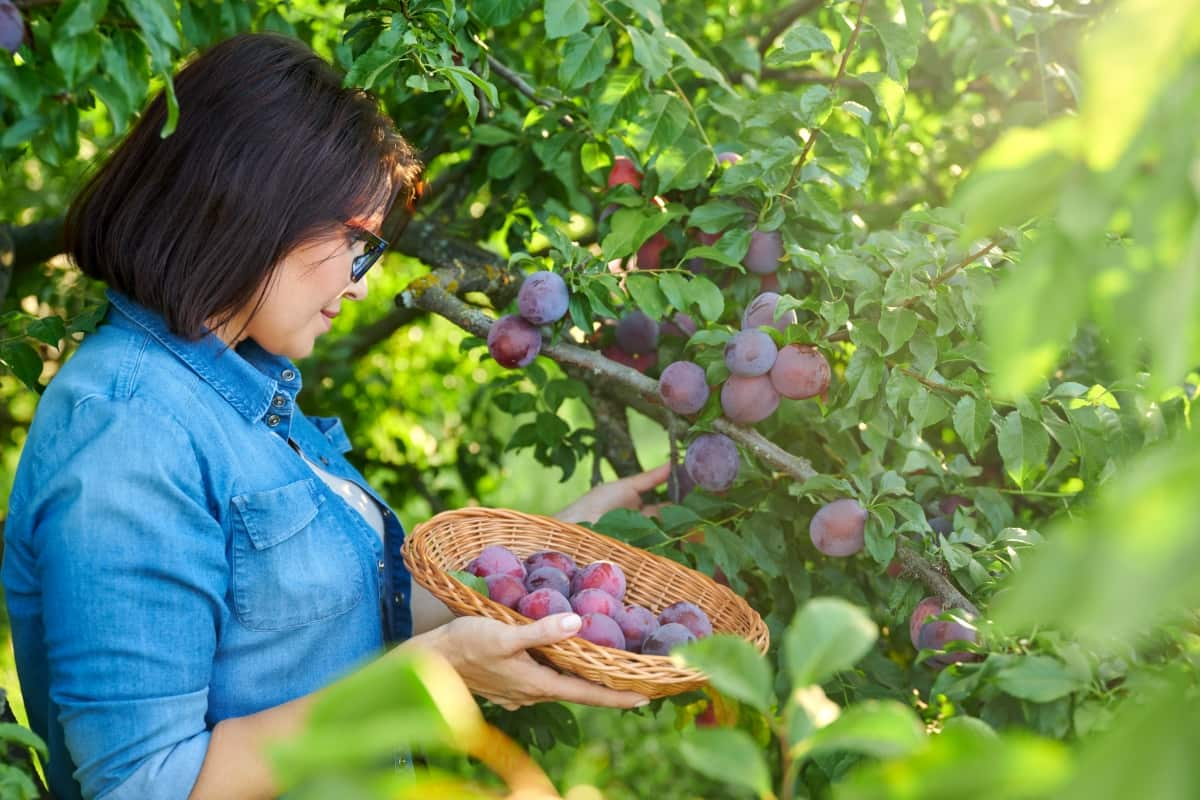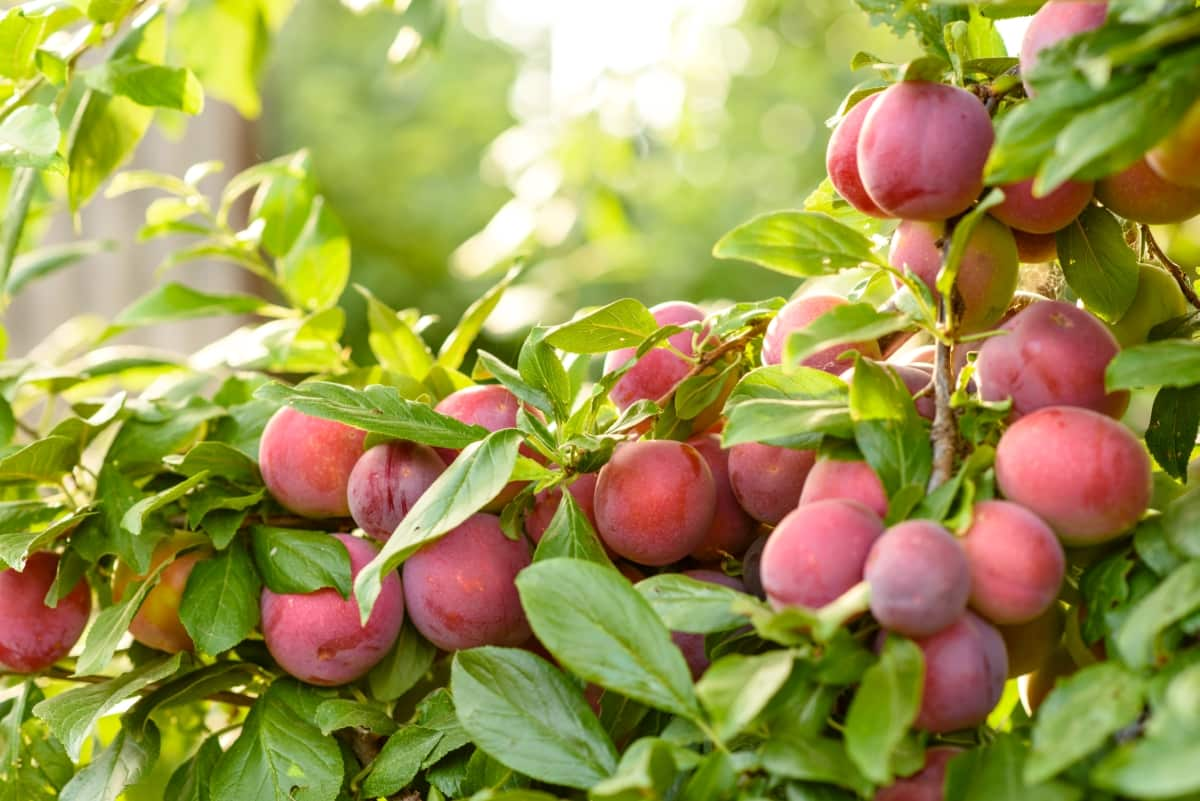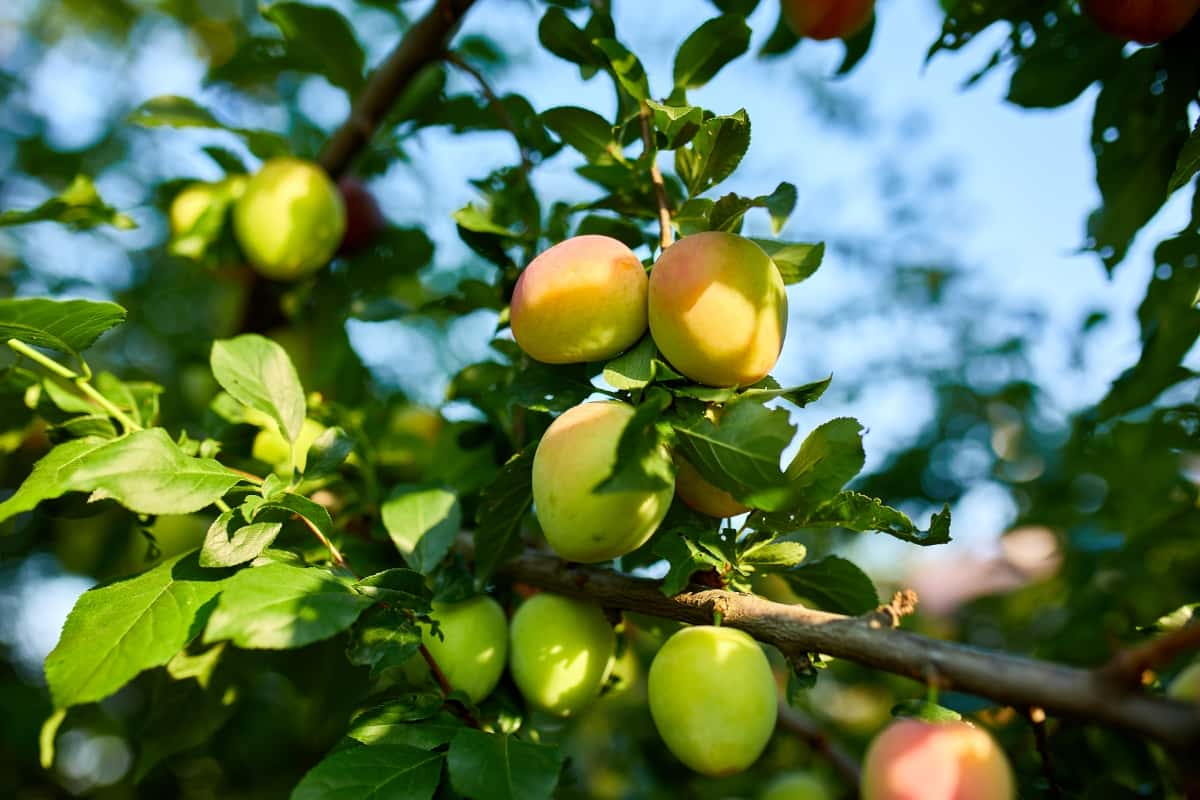Optimizing plum fruit size requires a strategic approach that considers various factors influencing growth. Factors such as proper nutrition, water management, pruning techniques, and pest control play crucial roles. This guide explores effective methods to enhance plum fruit size, ensuring a bountiful harvest and healthy, robust fruits. By understanding and implementing these strategies, growers can maximize the potential for larger and more flavorful plums.

How to Increase Plum Fruit Size
Essential Nutrients for Maximizing Plum Fruit Growth
To achieve optimal harvest, it is vital to focus on plum nutrition for bigger fruits. Adequate nutrient supply significantly influences plum fruit size enhancement. Key elements such as nitrogen, phosphorus, and potassium play pivotal roles in supporting vigorous growth. Nitrogen promotes overall plant development, phosphorus encourages root establishment, and potassium contributes to fruit development and quality.
Also, micronutrients like magnesium and calcium are essential for maintaining a balanced nutrient profile. By carefully managing these essential nutrients through proper fertilization, growers can effectively plum fruit size enhancement, ensuring a robust harvest of larger and more flavorful plums.
Innovative Irrigation Techniques for Larger Plum Fruits
Discovering effective plum watering methods for large fruits is crucial for optimizing yield and quality. Implementing innovative irrigation techniques can significantly impact Plum Fruit Growth. Adequate and consistent watering, especially during critical stages of fruit development, enhances fruit size and overall quality. Techniques such as drip irrigation or deep-root watering can provide targeted moisture to the root zone, promoting robust growth and larger plum fruits.
Additionally, incorporating mulching practices helps retain soil moisture, preventing water stress during dry periods. By embracing these advanced Plum fruit growth techniques, growers can foster healthier plum trees and maximize fruit size, ultimately improving the overall productivity of their orchards.
Optimizing Soil Quality for Increased Plum Size
Enhancing plum soil preparation for bigger fruits is pivotal in achieving optimal yields. Plum trees thrive within a specific pH range, generally between 6.0 and 7.0. Maintaining an optimal soil pH is essential for nutrient availability and uptake, directly influencing plum fruit size improvement.
Implementing strategic soil management practices, such as Introducing organic matter, such as vermicompost or well-aged manure, enhances soil structure and nutrient content, providing a favorable environment for plum trees. Conducting soil tests enables growers to assess nutrient levels and adjust accordingly to meet the specific requirements for larger fruit development. Additionally, proper irrigation practices play a crucial role in maintaining consistent soil moisture.
Effective Fertilization Strategies for Bigger Plums
Emphasizing Plum fertilization for bigger fruit Size involves a focus on organic fertilizers to enhance soil fertility and foster robust tree growth. Organic options, such as vermicompost or well-rotted manure, contribute essential nutrients to the soil, promoting sustainable and healthy plum large fruit cultivation. These organic fertilizers not only provide a slow release of nutrients but also improve soil structure, water retention, and microbial activity.
In case you missed it: How to Prune Plum Trees: Best Time to Trim, Tools and Techniques to Cut Back Plum Trees

By incorporating these natural amendments into the orchard management plan, growers can stimulate vigorous plum tree growth, resulting in larger and more flavorful fruits. This approach aligns with sustainable farming practices, ensuring the long-term health of the orchard while achieving the desired goal of cultivating plums with impressive size and quality.
Pruning Practices to Encourage Larger Plum Yield
Pruning Practices are integral for achieving optimal Plum fruit size maximization. Employing strategic Plum pruning techniques for large fruits involves a careful balance between removing excess growth, promoting sunlight penetration, and maintaining a well-structured canopy. Thinning out crowded branches allows for better air circulation and light distribution, fostering an environment conducive to larger and healthier plum yields.
Selective pruning also directs the tree’s energy towards fruit-bearing branches, optimizing the potential for larger and more robust fruits. Regular pruning sessions, particularly during the dormant season, help shape the tree for improved sunlight exposure and air circulation.
The Role of Climate in Enhancing Plum Fruit Size
The Plum climate impact on fruit size plays a vital role in influencing the development and size of plum fruits. Warm temperatures of 20-30 °C during the growing season promote fruit enlargement, while adequate sunlight of 6-8 hours per day is essential for photosynthesis, contributing to overall fruit development.
Proper water availability, influenced by regional precipitation patterns, also influences Plum Fruit Size. Understanding the plum climate impact on fruit size allows growers to adapt their cultivation practices, such as adjusting irrigation schedules or providing shading during extreme heat. By considering and managing the climatic factors, growers can ensure Plum fruit growth optimization and high-quality fruits.
Organic Approaches to Boosting Plum Fruit Dimensions
Organic approaches are essential for growers committed to sustainable practices in Plum fruit size expansion. Embracing organic plum farming for bigger fruits involves utilizing natural methods to enhance soil fertility and promote overall tree health. Incorporating compost or well-rotted manure provides essential nutrients, fostering robust growth and larger fruit development.
Cover cropping with legumes can fix nitrogen in the soil, supporting long-term soil fertility. Beneficial microbial inoculants enhance nutrient uptake, contributing to plum tree vigor. Implementing these organic approaches not only prioritizes environmental sustainability but also ensures that the fruits produced are free from synthetic chemicals.
Pest and Disease Management for Healthier, Larger Plums
Plum pest control is a critical step in ensuring successful Plum fruit growth protection. Implementing effective Plum pest control for healthy big fruits involves a combination of preventive and responsive measures. Regular monitoring of orchards helps identify potential threats early on. Natural predators and beneficial insects can be encouraged to control pest populations organically. Applying neem oil or insecticidal soaps offers eco-friendly solutions for pest management.
In case you missed it: Drip Irrigation Cost Per Acre for Plum Plantation: Exploring Installation Costs Along with Subsidy

Additionally, practicing proper sanitation, such as removing fallen fruits, reduces disease risk. Fungicidal treatments, especially during susceptible stages, safeguard against common diseases. Integrated pest management (IPM) strategies, combining biological, cultural, and chemical control methods, create a comprehensive approach.
Advanced Agricultural Technologies for Plum Size Increase
Plum growth technology for bigger fruits involves Precision agriculture techniques, including sensor-based monitoring and automated irrigation systems, enabling growers to optimize water and nutrient delivery for enhanced plum fruit size. Implementing advanced pruning technologies, such as robotic pruning systems, allows for precise and efficient canopy management, promoting larger fruit development.
Controlled environment agriculture, utilizing greenhouse or high-tunnel structures, provides a controlled climate for year-round plum cultivation, contributing to consistent and increased fruit sizes. Genetic advancements through selective breeding and biotechnology offer promising avenues for plum fruit size innovation by developing varieties with inherent traits for larger and more robust fruits.
Cultivar Selection for Maximizing Plum Fruit Size
It is a pivotal aspect of orchard planning, focusing on bigger plum varieties to achieve optimal plum fruit size enhancement. Growers must carefully choose cultivars known for their propensity to yield larger fruits. Opt for bigger plum varieties like ‘Santa Rosa,’ known for its large, sweet fruit, or ‘Satsuma,’ which has a reputation for impressive size and flavor. ‘Methley’ is another cultivar recognized for its size and early harvest.
‘Black Amber’ and ‘July Santa Rosa’ are additional options known for producing substantial and delicious plums. By making informed decisions in cultivar selection, growers can harness the inherent qualities of Bigger Plum Varieties, setting the stage for successful Plum Fruit Size Enhancement and ultimately improving the market value of their harvest.
In case you missed it: Plum Farming Cost and Profit: 1-Acre Project Report and Production Economics

Conclusion
In conclusion, achieving larger plum fruits involves a holistic approach encompassing innovative irrigation techniques, soil quality enhancement, strategic pruning, and organic farming practices. By integrating these diverse strategies, growers can unlock the full potential of their orchards, ensuring not only larger but also healthier and more flavorful plums for sustained success in the fruit industry.
- Feed Your Flock for Less: Top 10 Tips to Save on Chicken Feed
- Ultimate Guide to Ossabaw Island Hog: Breeding, Raising, Diet, and Care
- Hatching Answers: The Top 10 Reasons Your Chickens Aren’t Laying Eggs
- Eggs and Economics: Breaking Down the Cost of Raising Backyard Chickens
- Defend Your Greens: Proven Methods to Keep Iguanas Out of Your Garden
- Ultimate Guide to Cinnamon Queen Chicken: A Comprehensive Guide for Beginners
- Ultimate Guide to California Tan Chicken: Breeding, Raising, Diet, Egg-Production and Care
- Ultimate Guide to Marsh Daisy Chicken: Breeding, Raising, Diet, and Care
- 10 Types of Chicken Farming Businesses You Can Start for Profits